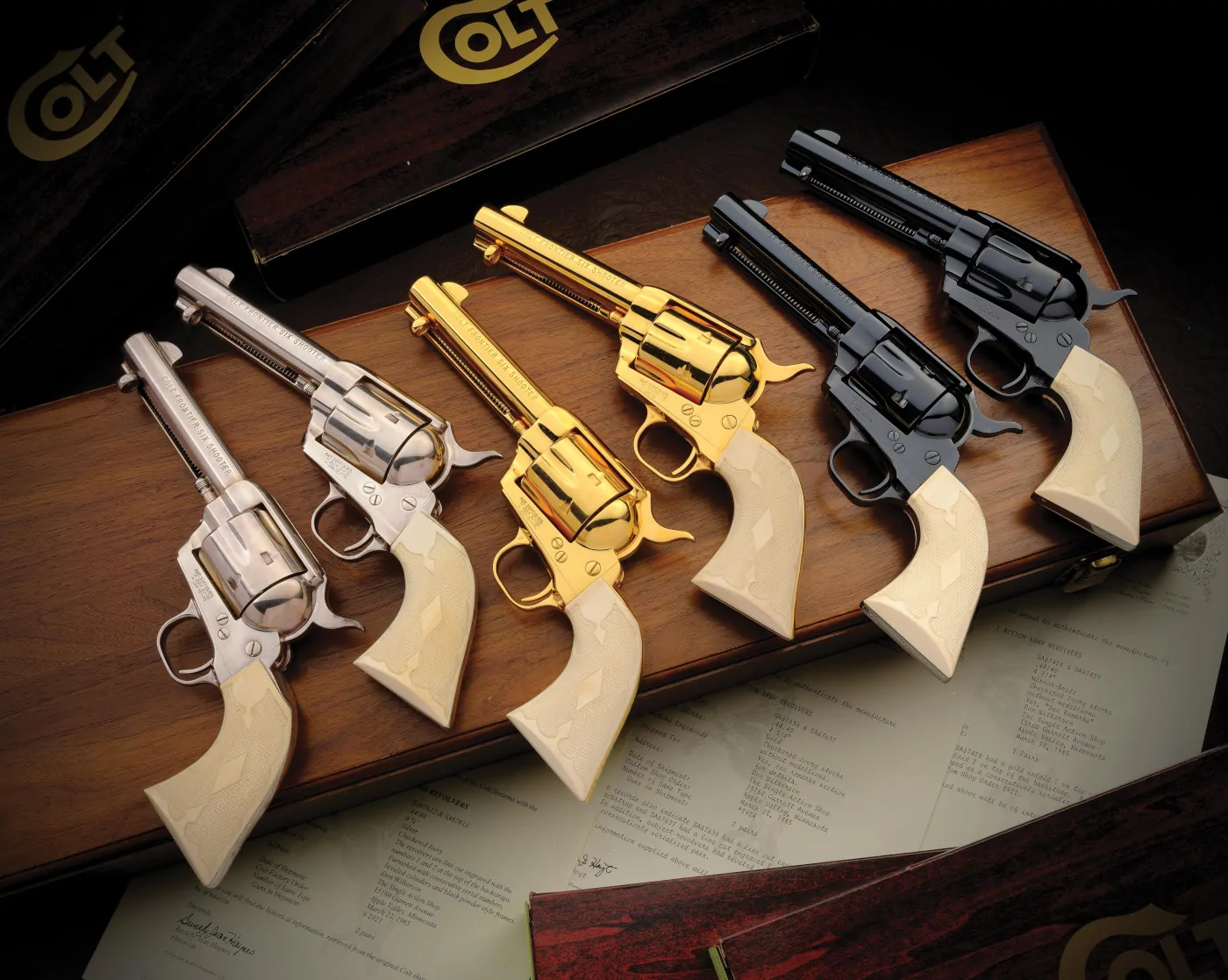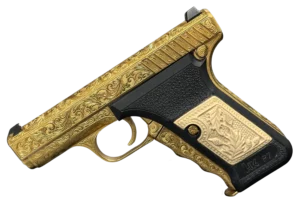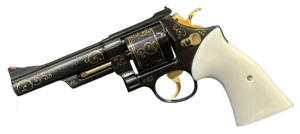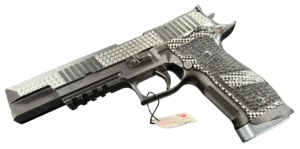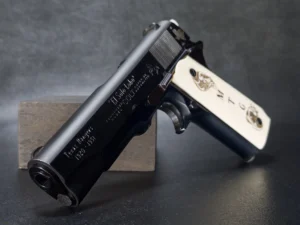Key Takeaways:
- Firearm collecting is about far more than just hardware—it’s about heritage: Behind every flintlock, Garand, or gold-inlaid shotgun lies a story that connects us to a moment in history, a craftsman’s hand, or a battle that shaped the world. Collectors aren’t just acquiring guns; they’re preserving human stories.
- Innovation and artistry are twin pillars of what makes a firearm collectible: Whether it’s the brutal reliability of the AK-47 or the handcrafted luxury of a Purdey shotgun, actual collector pieces balance function and form. Sometimes it’s about performance; other times, it’s all about beauty—or both.
- Tomorrow’s classics are already here—you have to know where to look: From smart guns with fingerprint safeties to precision rifles with space-age materials, today’s innovations could be the prized collectibles of the next generation. The line between history and the future is thinner than it seems.
There’s something undeniably captivating about a finely made firearm—something that goes beyond steel, wood, and mechanical function. For collectors, it’s not just about owning a piece of history; it’s about holding a story, a legacy, maybe even a small piece of someone’s courage or craftsmanship in their hands. The world of firearm collecting isn’t just a hobby—it’s a connection across time.
Where It All Began: The Pioneers Who Shaped Precision
Let’s rewind a few centuries.
Back when black powder filled the air and craftsmanship reigned supreme, gunsmiths weren’t just making weapons—they were sculpting precision tools by hand, each one slightly different, each one imbued with the personality of its maker. The flintlock rifle? That wasn’t just a step forward in technology; it was a leap of imagination.
Collectors today treasure these early creations because of what they represent: innovation under constraint, art before automation. Think about it—no CNC machines, no laser guidance—just sweat, skill, and stubbornness. A flintlock rifle from the 1700s isn’t just a functional piece; it’s a time capsule. Every nick in the stock, every groove in the barrel whispers of a different age.
And let’s not forget the aesthetics. These early guns were ornate, detailed, and often engraved with care. They weren’t built just to fire a shot—they were built to be admired. Even now, centuries later, collectors are still chasing that blend of utility and elegance.
The Art—and Aftermath—of War
War has a strange way of shaping what we value. On one hand, it’s a time of loss; on the other, it drives innovation faster than peace ever could. For collectors, military firearms represent more than just technological milestones—they’re living artifacts of conflict, courage, and sometimes survival.
Take the Springfield Model 1861. To the average eye, it’s just another rifle. But to someone who’s spent time studying Civil War history, it’s a battlefield veteran. These rifles were carried through the blood-soaked fields of Antietam and Gettysburg. They were there when America tore itself in two—and when it slowly stitched itself back together.
World War II pieces carry a similar weight. The M1 Garand is a prime example. Patton called it “the greatest battle implement ever devised,” and most collectors would nod in agreement. It was rugged, semi-automatic, and years ahead of its time. Owning one isn’t just about having a great gun—it’s about owning a symbol of Allied strength and innovation.
And sure, some people collect stamps or coins. But there’s a particular gravity to holding a rifle that helped change the course of history. These aren’t just collectibles—they’re conversation starters with the past.
Game Changers: The Firearms That Flipped the Script
Some guns didn’t just participate in history—they changed it entirely. These are the icons of innovation, the designs that made everyone else go back to the drawing board.
Let’s start with a familiar name: Colt. When the Single Action Army revolver—better known as the Peacemaker—hit the scene, it wasn’t just a gun; it was a game-changer. Lawmen, outlaws, and settlers all carried it. It brought the idea of personal defense and firepower to a whole new level. Even Hollywood couldn’t resist its charm.
Then there’s the AK-47. Like it or not, its impact is impossible to ignore. Designed for durability and ease of use, it became the standard for half the world’s militaries—and countless insurgencies. Is it elegant? Maybe not in the traditional sense. But there’s beauty in its brutal efficiency. Collectors who add one to their stash aren’t just buying a rifle—they’re acknowledging a seismic shift in 20th-century warfare.
These are the firearms that sparked revolutions—not just political, but mechanical.
Where Craftsmanship Meets Luxury
Let’s switch gears for a moment. Not every collector is drawn to military grit or historical milestones. Some chase something else entirely—luxury, elegance, exclusivity. And honestly, who can blame them?
Enter Purdey and Holland & Holland, the aristocrats of the gun world. Their shotguns aren’t just tools—they’re heirlooms. Every detail, from the hand-engraved receiver to the polished walnut stock, screams sophistication. These aren’t firearms built for mass production; they’re custom creations, often commissioned like fine suits or sports cars.
Then there’s the world of engraved and inlaid firearms—pieces adorned with gold, silver, and scrollwork so fine it looks like lace etched in metal. These aren’t just guns; they’re art pieces. Museums want them. Collectors obsess over them. Some might say they’re too pretty to shoot—but that’s missing the point.
Because for many collectors, the aesthetic matters just as much as the mechanics. It’s about pride, legacy, and preserving craftsmanship that’s slowly fading into history.
The Future Looks… Pretty Darn Collectible
Now, what about modern guns? Is there room in a collector’s cabinet for something built last year? Absolutely. In fact, today’s cutting-edge firearms might just be tomorrow’s crown jewels.
Precision rifles, for example, are experiencing a renaissance. With carbon-fiber barrels, adjustable stocks, and scopes that can practically see into next week, these rifles are pushing accuracy into sci-fi territory. And let’s be honest—there’s something thrilling about knowing you’re holding the future of shooting sports in your hands.
Then we’ve got smart guns—yes, the kind with biometric safeties, app integration, and user-specific firing permissions. Are they perfect yet? Not quite. But collectors are already eyeing them for their novelty and potential historical importance. One day, we might look back at the first wave of smart guns the way we now regard the earliest repeating rifles.
Because collecting isn’t just about nostalgia, it’s about foresight, too.
Final Thoughts: More Than Just Metal and Wood
So what keeps collectors hooked?
It’s not just about value, though that helps. It’s not just about the thrill of the hunt, though that’s definitely part of it. It’s about the stories. The connections. The way each firearm, whether scarred from battle or polished to perfection, tells a tale that no book ever could.
Firearm collecting is history you can hold. A mechanical art you can admire. And it’s a passion that bridges generations—from the frontier blacksmith to the modern engineer, from the soldier in the field to the enthusiast in a quiet study.
So yeah, maybe it starts with a single rifle. But before you know it, you’re neck-deep in serial numbers, provenance records, and auctions that feel more intense than any poker game.
And honestly? That’s half the fun.
Frequently Asked Questions
Several factors come into play. It’s not just age or rarity, though; those factors do help. Provenance (who owned it), historical relevance, craftsmanship, and innovation all matter. A well-used M1 Garand with a soldier’s name etched into the stock? That’s got soul—and collectors notice.
Yes, and more than you might think. Firearms being made today—especially high-end precision rifles and early smart guns—are already turning heads in the collecting world. Think of them as future classics; the kind of pieces that will tell tomorrow’s stories.
You don’t need deep pockets to begin. Start with historical replicas, surplus rifles, or more common but well-documented pieces. Focus on quality, condition, and the story behind each gun. Over time, your eye—and your collection—will grow sharper.
Both, surprisingly. Some collectors do take them to the range (carefully), but many are admired as art pieces. Think of them like vintage cars—you can drive them, but sometimes it’s just as satisfying to polish them and stare for a while.
Keep them clean, dry, and properly stored. Use gun safes with climate control if possible. And resist the urge to “improve” or refinish them—original condition often holds more value than a modern makeover.


